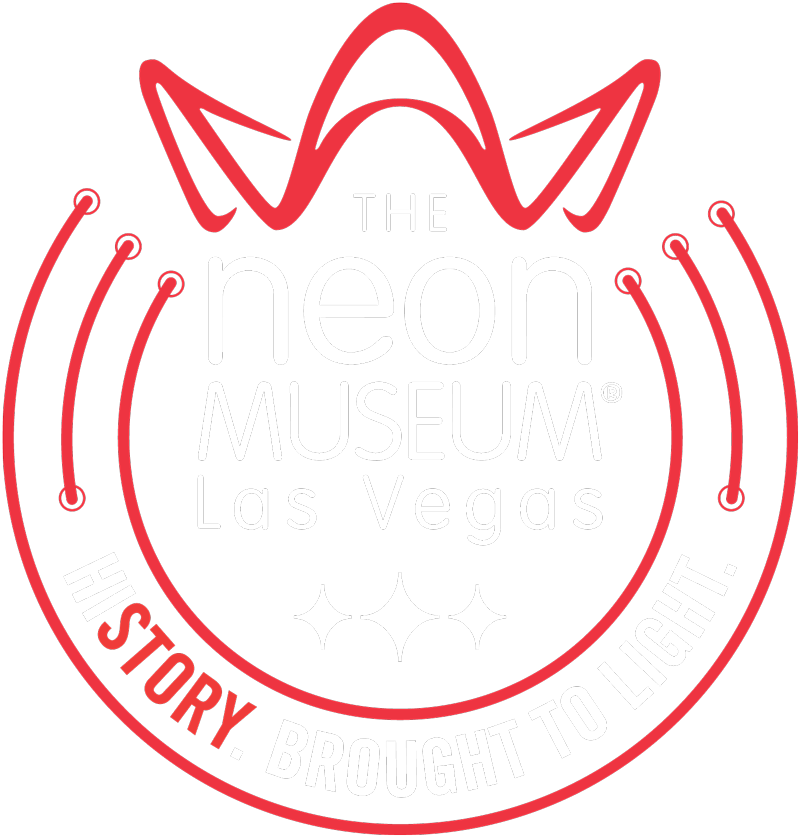Long-time supporter Richard Hooker kicks off the season's "Why I Give" blog series, featuring members and volunteers of The Neon Museum.
 Q: When/how did you get involved with The Neon Museum?
Q: When/how did you get involved with The Neon Museum?
A: I had a unique role in helping the Neon Boneyard come into existence. Twenty-two years ago, after The Neon Museum became a non-profit, it partnered with the City of Las Vegas to open the Neon Boneyard as a permanent home to display its collection of signs that were being stored in other places. As the city’s Urban Arts Coordinator, I was given the opportune challenge and task of “running the Boneyard” for the first several years, working for the city, and with the original board of directors of the museum.
Q: What attracted you to the museum?
A: As an artist, a visual-oriented person, and cultural planner, I’m interested in the consequential role that neon signs have had – and continue to have – in the design, architecture, and mythology of the city.
Q: Why do you give to The Neon Museum? What motivates you to stay involved?
A: Over the years I’ve taken an interest in the various phases of the museum’s development as one of our best resources that demonstrates how design, and in particular electric architecture, expresses the personality and artistry of Las Vegas.
Q: Do you have an anecdote about the museum you would like to share?
A: Once we secured the Boneyard the immediate task was to finally begin to move signs into the then empty outdoor lot on 770 North Las Vegas Boulevard. The very first sign moved into the Boneyard was the silver Aladdin Lamp from the 1970s. The Aladdin Hotel had been imploded just before the Boneyard opened, but the sign was saved and in storage with plans for it to be shipped to Washington, DC. By chance I met an Aladdin executive at a tourism party, and after learning of their proposed plan to donate the sign to the Smithsonian Institution, I urged them to give the sign to The Neon Museum to be the first sign relocated to the newly opened lot. After a period of negotiations, the hotel agreed to donate the sign to the museum on the condition it could be loaned on request to the Smithsonian. So, the sign was quickly moved into the empty Boneyard one brisk morning, and the rest is history.
Q: In your opinion, what is the most important work that The Neon Museum does?
A: The most important first task is to save historical local signs, those especially at risk – to keep them from being destroyed or going to scrap. Next, the museum is tasked with preservation and in some cases restoration, and finally interpretation of the signs as important cultural objects.
The Neon Museum is an important American institution that tells the special story of Las Vegas, to locals and visitors alike.
Q: What do you hope the organization will achieve over the next ten years?
A: Expand the outdoor facility so more signs can be displayed, generate funds to restore more signs, and partner with exhibition spaces to display the museum’s Ephemera Collection, visual materials related to Las Vegas signs.
Q: Who do you think would enjoy a visit to the museum?
A: I think young people and students of history, urban design, and architecture, would especially enjoy a visit.
Q: What’s your favorite sign/why?
A: I’m partial to the first signs that were moved into the Neon Boneyard. In addition to the Aladdin Lamp, some of the early collection included: Stardust, Dot’s Flowers, Red Barn, Lido de Paris, Coin Castle, Sassy Sally’s, Sweetheart Wedding Chapel, now in the North Gallery, and Bow & Arrow Motel, now on loan to the Scenic Byways project, in partnership with the City of Las Vegas.
Download the tour map of The Neon Museum signs on and around Las Vegas Boulevard.

